One of the phenomena triggered by the AI boom in recent years is deepfakes. The term is made up of the words deep learning and fake.
Deep learning refers to machine learning methods, while a fake is a forgery, an imitation or a hoax. A deepfake is therefore a forgery created with the help of AI processes.
These can be fake computer-generated photos of known people, images, or videos in which faces have been replaced with others, or even voice recordings or messages in which a known voice says phrases that it has never actually uttered.
Such forgeries of images, videos, and sound recordings have always existed. However, thanks to AI technology, these fakes are now near perfect and difficult to distinguish from authentic recordings.
What’s more, the required software is available to everyone and is often even offered as a web service meaning anyone can create deepfakes nowadays.
High potential for misuse
AI applications for creating deepfakes are often advertised as software that can be used to play tricks on other people.
But in fact, such programs are often misused by criminals. They utilize the possibilities of AI for these scams. For example:
- They use AI to perfect the grandchild trick. To do this, they call their victims using the AI-generated voices of relatives, describe an emergency such as an accident and ask for immediate financial support.
- In a video, they put a phrase into the mouth of a politician that they have never said, in an attempt to influence public opinion.
- You have a celebrity advertise a product without their knowledge or consent. Customers who then order this product are either ripped off with an inflated price or never receive the goods.
Recognizing deepfake images
When the deepfake scams began, consumers could only protect themselves from being ripped off by criminals by looking or listening carefully. This is because the AI often works inaccurately and many details are misrepresented or unrealistic.
However, other AI applications soon appeared on the web that examined images and videos precisely for these errors and also included color patterns and textures in their analyses. A whole range of such programs are now available. Many of them are free of charge.
The user uploads an image or video to a website and the AI analyses it and tells the user whether it’s a deepfake or not.
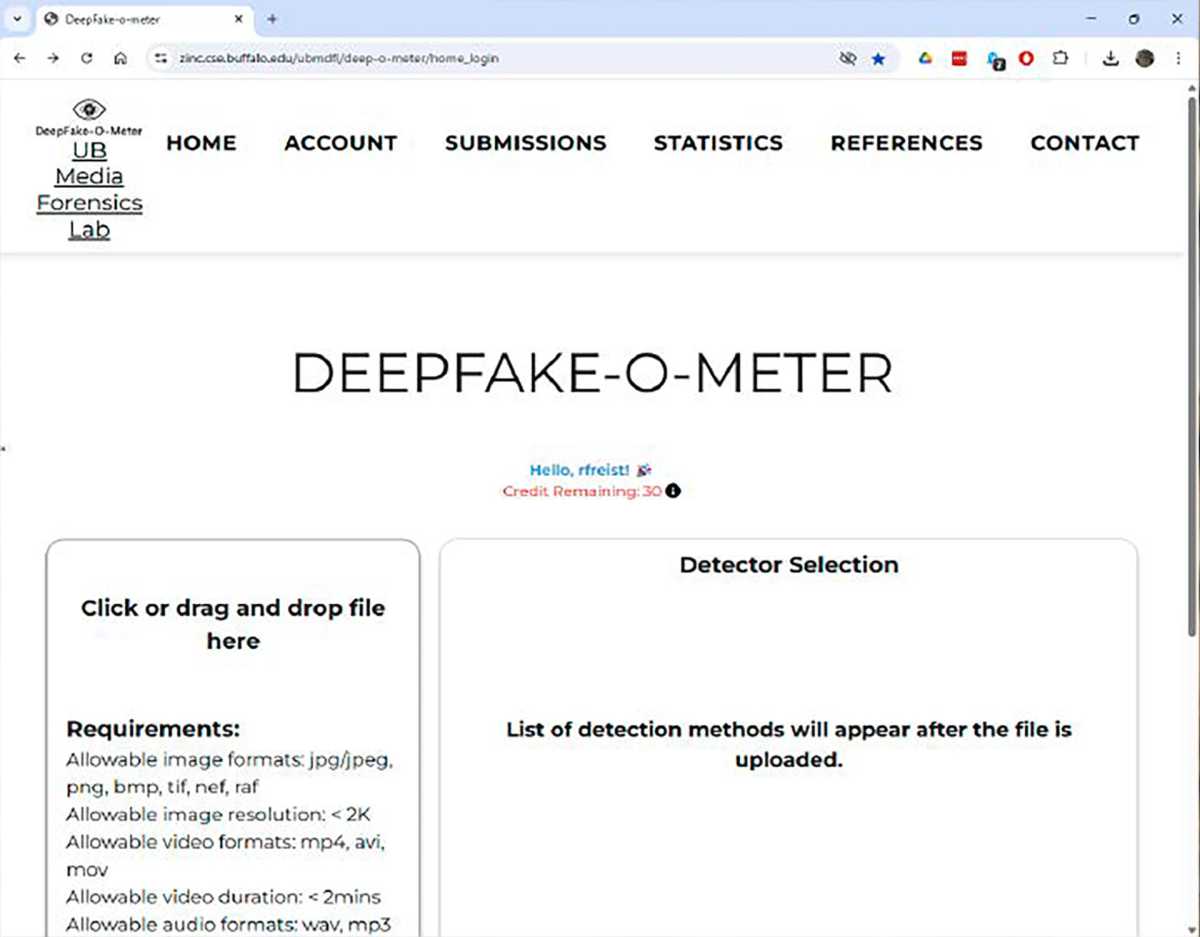
The University at Buffalo’s Deepfake-o-Meter recognizes deepfakes in images, videos and audio files using 16 programs from the open source scene. In the test, however, the performance of the tools was not convincing.
IDG
Probably the most comprehensive deepfake detection tool on the web comes from the University at Buffalo in the US state of New York. The Deepfake-o-Meter project, developed there by a team at the Media Forensic Laboratory, brings together 16 AI recognition programs from the open source scene and feeds them with images, videos, and audio files uploaded by users.
After a few seconds, the tools present their results and state the probability that an uploaded medium is an AI-generated deepfake.
To gain access to the Deepfake-o-Meter, all you need to do is register for free with your e-mail address. This gives the user 30 credits for using the service; a single query costs one credit.
For a small test, we first uploaded what is probably the most famous deepfake image in the world, the photo of the late Pope Francis in a white down jacket created with Midjourney.
However, only two services from the Deepfake-o-Meter repertoire gave a probability of more than 50 per cent that the photo was fake.

None of the recognition programs used by Deepfake-o-Meter identified the image of Pope Francis in a white down coat as a reliable deepfake. Other AI images were also not reliably recognized.
IDG
In a second test, we had the Canva.com portrait generator generate the image of a woman. This time, seven of the sixteen AI tools recognised the deepfake.

This image of a woman generated with Canva.com was also only recognized as AI-generated by some of the detectors of the Deepfake-o-Meter.
IDG
The AI recognition of the French company Sightengine works much faster than the Deepfake-o-Meter tools. In the test, it recognized the photo almost immediately after it was uploaded.
For the portrait of a woman created with Canva.com, it gave a probability of 99 per cent that it was an AI-generated image. However, this program also produced inconclusive results when it came to the picture of the Pope—according to Sightengine, the probability of a deepfake was 53 percent.
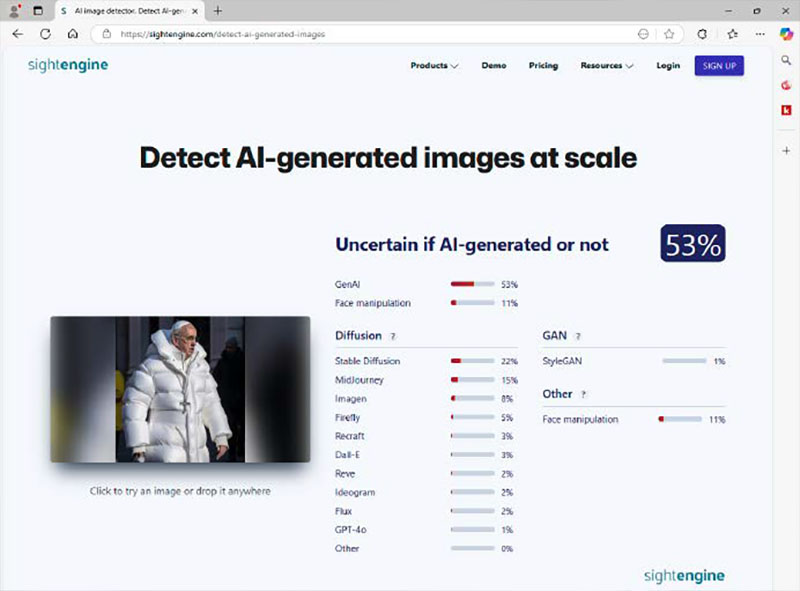
In the case of the image of the Pope in a white down jacket, Sightengine’s AI is not sure whether it is a deepfake or not.
IDG
Recognize deepfake images by these details
Deepfake detectors such as Sightengine are important tools for identifying fake photos. In many cases, however, it’s also possible to recognize with the naked eye that an image doesn’t reflect reality—the devil is often in the details.
One of the biggest problems for AI is the representation of human fingers. The programs are shown millions of photos during training, many of which show hands and fingers.
However, the hands are often incomplete. In a photo of a handshake, for example, only three fingers are visible in most cases. In other pictures, some fingers are in a pocket or are completely or partially covered by objects.
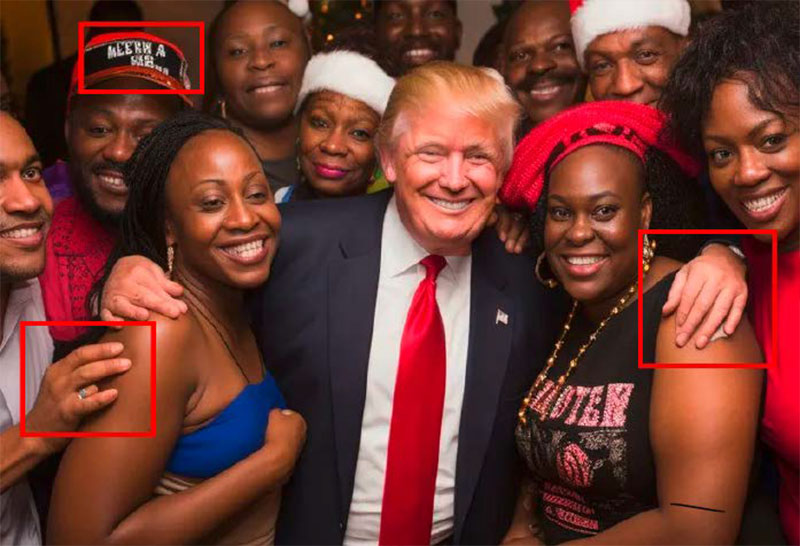
This deepfake of Donald Trump was shared by a fan on Facebook during the election campaign. The depiction of the fingers is incorrect – a common problem. And the writing on the cap is illegible.
IDG
As the AI does not know how many fingers a person has, it deduces from these photos that the number and length can vary. Accordingly, it provides some hands with more or fewer fingers or gives them fingers of different lengths and sizes.
- The AI programs also struggle with arms and legs. The limbs are often not in the right place or cannot be assigned to a person.
- Hair often looks artificial. The strands fall at the wrong angle or cannot be assigned to a person.
- The programs also often have difficulties with clothing details. Shirts and coats have different buttons, necklaces do not form a closed ring or spectacle frames are deformed.
- Fonts appear as spidery, illegible characters.
- There are often incorrect shadows in the background, or there are inconsistencies in the proportions.
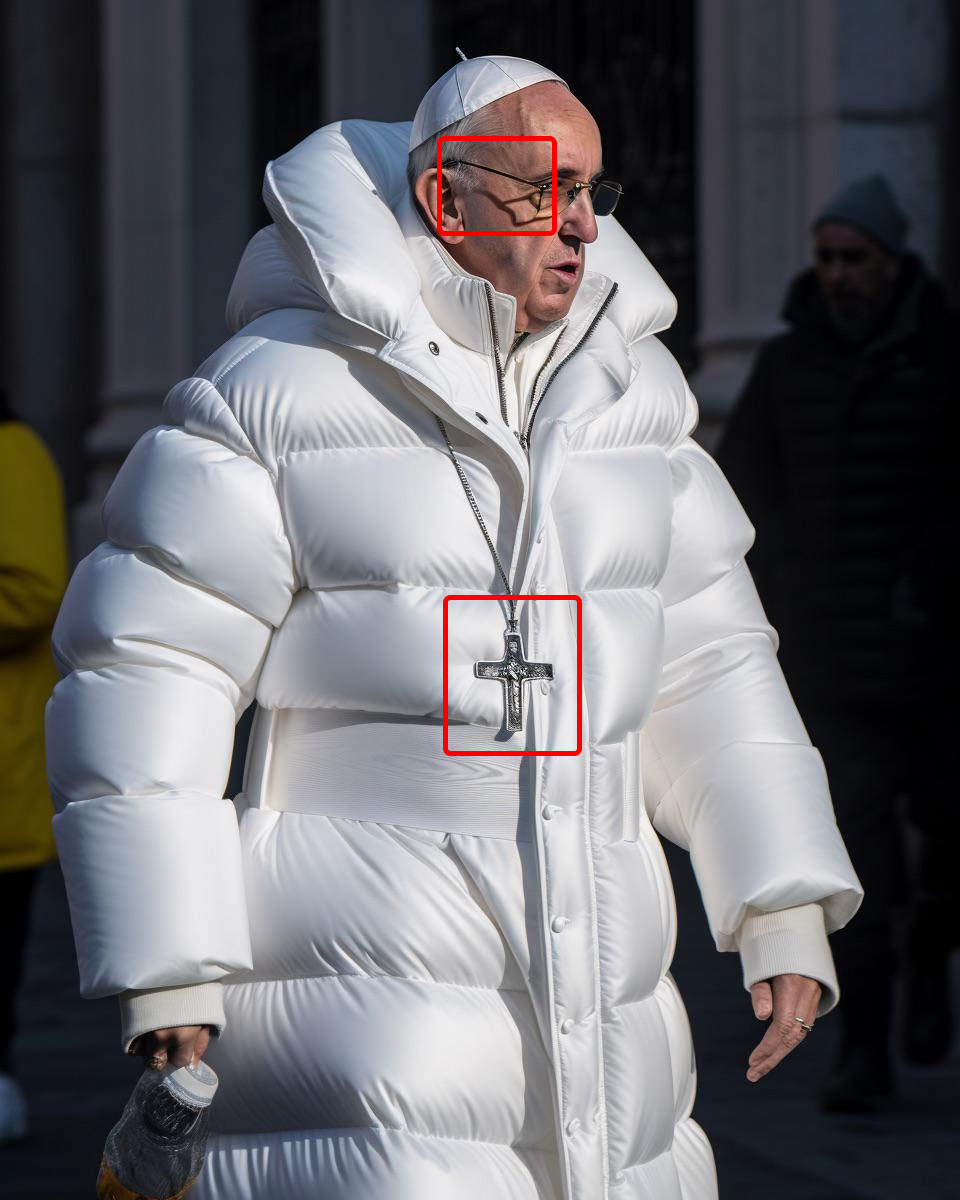
In the image of the Pope, the shadow does not match the frame of the spectacles, and the crucifix is hanging on a chain only on one side.
Recognizing deepfake videos with AI software
The creation of deepfake videos took a huge leap forward last year with the introduction of the Sora video generator from Open AI. The films look so real that they can hardly be distinguished from real videos. You can find large quantities of amazingly realistic-looking films on YouTube made with this new technology.
Free AI video detectors are Deepware.ai and the AI detector from Hive. Both are designed as web applications. Deepware.ai is completely free, while the basic version of Hive only accepts videos up to 20 seconds in length.
We uploaded some Sora videos to both websites to see how they performed. The result with Deepware was disappointing: the program did not recognize the deepfakes in any of our examples.
The Hive detector’s results on the other hand were quite different: it indicated a deepfake probability of 99 per cent for all Sora films.
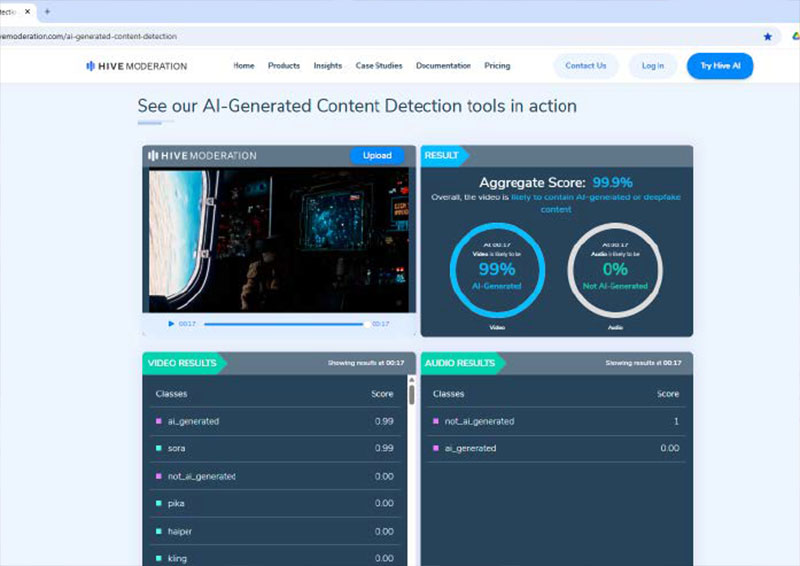
Melden Sie sich an, um einen Kommentar hinzuzufügen
Andere Beiträge in dieser Gruppe
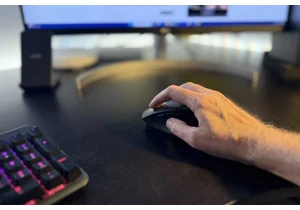
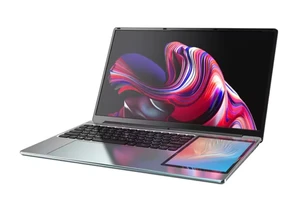
Multi-screen laptops are a thing, and have been a thing for a while.
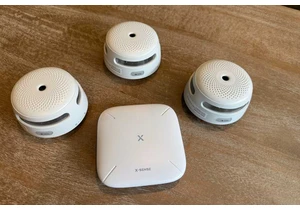

It might seem that “ChatGPT” is all you ever hear about when discussi

Just because it’s tiny doesn’t mean it’s not powerful. This Kamrui Hy
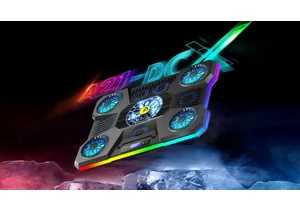
It’s summer, it’s hot, and even your laptop is struggling, so it’s ti

Beginning on August 1 of this year, residents in North Dakota will lo
